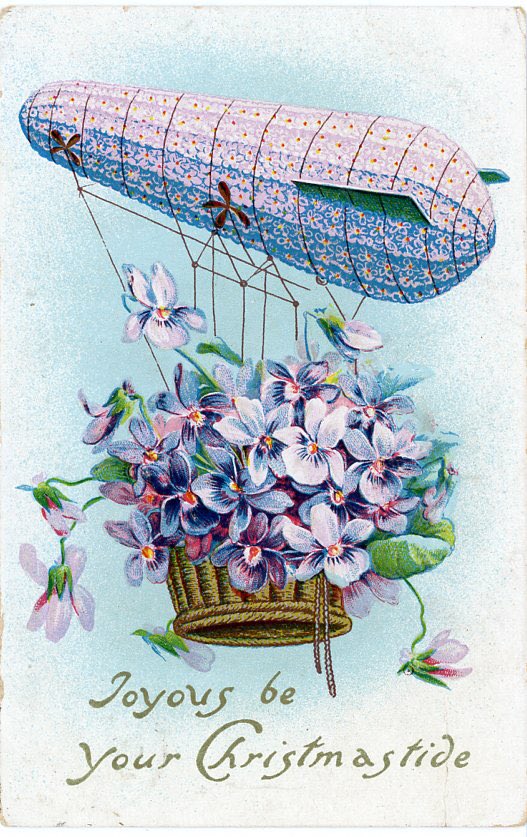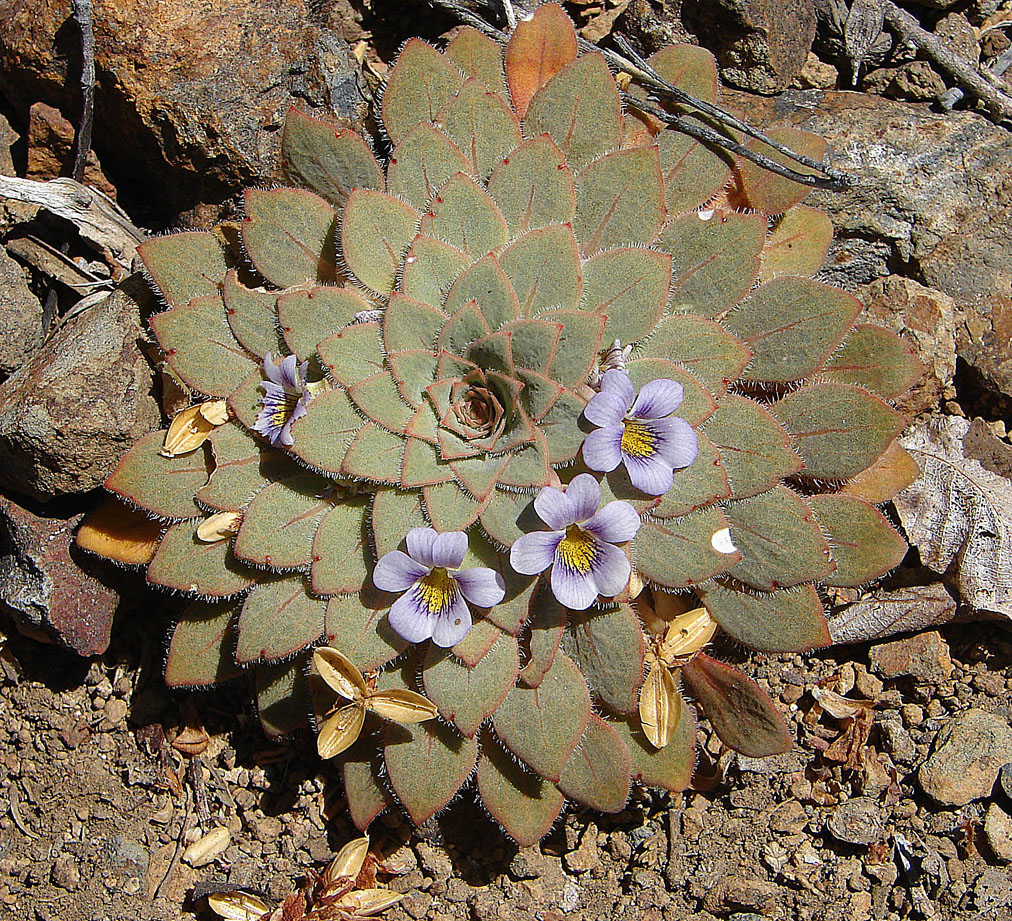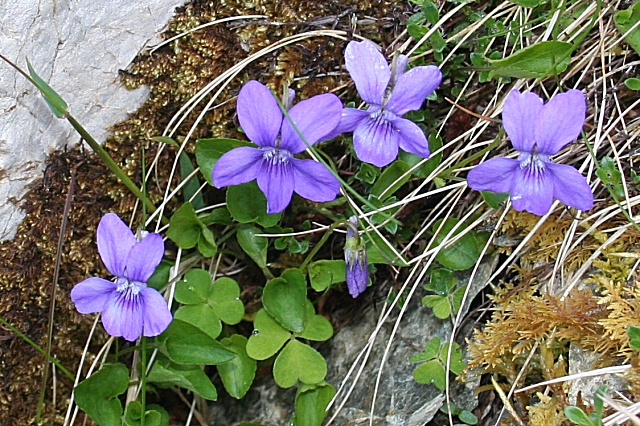By Laura Jennings
Violets are not one of the first festive plants that comes to mind! In my experience they are one of the first plants to flower in the cold early days of the UK spring. However, this incredible Christmas card brings violets to midwinter. It shows an airship with its envelope covered with a pattern of tiny, unidentifiable flowers, and a ludicrously out-of-scale basket of violets hanging below. I think it is probably also aerodynamically unsound, but I am only here to critique the botany.
This curious postcard appeared on a listicle of ‘Victorian Christmas Cards’, and I thought it was wonderfully surreal, so I saved the image. Now, I cannot find the site I saw it on. I think it is later than Victorian, as rigid airships like the one on the card had their first flight in 1900 and were in use until the Hindenburg disaster of 1937 (Grossman, 2009).

The violets are more stylised than drawn with botanical accuracy, being recognisable as violets but not to species.
Diversity of Viola
Viola is a huge genus of more than 600 species, distributed throughout the temperate zones and on tropical mountains. The most diverse group are the rosulate violets of Viola section Andindium, which are stemless and have cushion-like rosettes of leaves. They occur in the dry sub-alpine regions of the Andes, and are a diverse group of about 100 species with many more yet to be scientifically described (Watson et al., 2019).

(Dick Culbert from Gibsons, B.C., Canada, CC BY 2.0 <https://creativecommons.org/licenses/by/2.0>, via Wikimedia Commons)
I do not know where this Christmas card was produced, other than its inscription is in English. The Flora of North America gives 73 Viola species (Little & McKinney, 2015), so in the interests of brevity I will assume we’re in the UK. There is a helpful guide to the common UK Viola species on the BSBI website (O’Donnell, 2020) which tells us that the first key characters to note on a violet are those of the spurs and sepals. Although some of the violets on the card are shown from the side, the spurs are only vaguely suggested. The pointed sepals with no appendages indicate it to be most likely one of the dog violets, and as the spurs are not darker than the petals, I am calling it the common dog violet, Viola riviniana Rchb.

Purple poetry
The significance of purple violets in the ‘language of flowers’ tradition is devotion and faithfulness (Anon, 1877). They also have also been an important lesbian symbol since the time of Sappho, who references them in her poetry. The wearing of violets as a symbol by LBGT+ people was particularly prominent in 1920s Paris and New York (Medhearst, 2021). I would love to think that those events were contemporary with this card, but in the New York Public Library collections (New York Public Library, 2021), most of the greetings cards featuring violets are dated 1900 to 1909.
I would love to know more about this card, so please get in touch with me (@botanistlaura) if you know more.

References
Anon, (1877) The language of flowers; with a complete vocabulary, and a new selection of quotations from the English poets, illustrating the sentiment and meaning attached to the various flowers and plants, together with flower language in bouquets, &c, &c, … London, Ward, Lock and Tyler. (Via BHL)
Grossman, D. (2009) The Hindenburg Disaster https://www.airships.net/hindenburg/disaster/
Little, R.J. & McKinney, L.E. (2015) Violaceae. In: Flora of North America Volume 6, 106.
Medhearst, E. (2021) From Lavender to Violets: The Lesbian Obsession with Purple https://dressingdykes.com/2021/08/20/from-lavender-to-violet/
New York Public Library Digital Collections. https://digitalcollections.nypl.org/search/index?filters%5Btopic%5D=Violets&keywords=# (accessed December 2021)
O’Donnell, M. (2020) Violet ID Tips https://bsbi.org/wp-content/uploads/dlm_uploads/dinkymoira-Violets.pdf
Watson, J.M., Flores, A.R. and Arroyo-Leuenberger, S.C. (2019) A new Viola (Violaceae) from the Argentinian Andes. Willdenowia, 49(1), pp.35-41.
The Author
